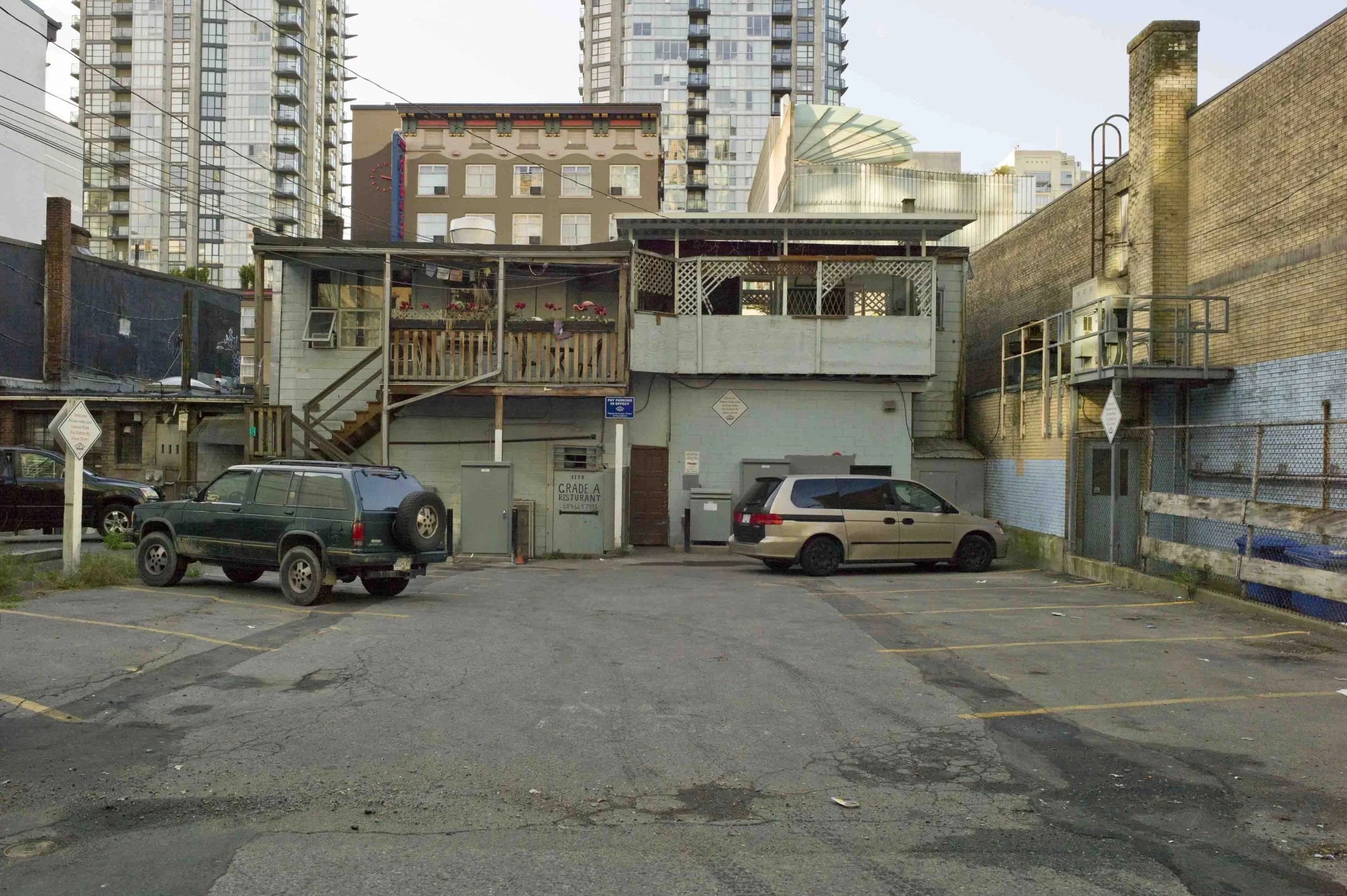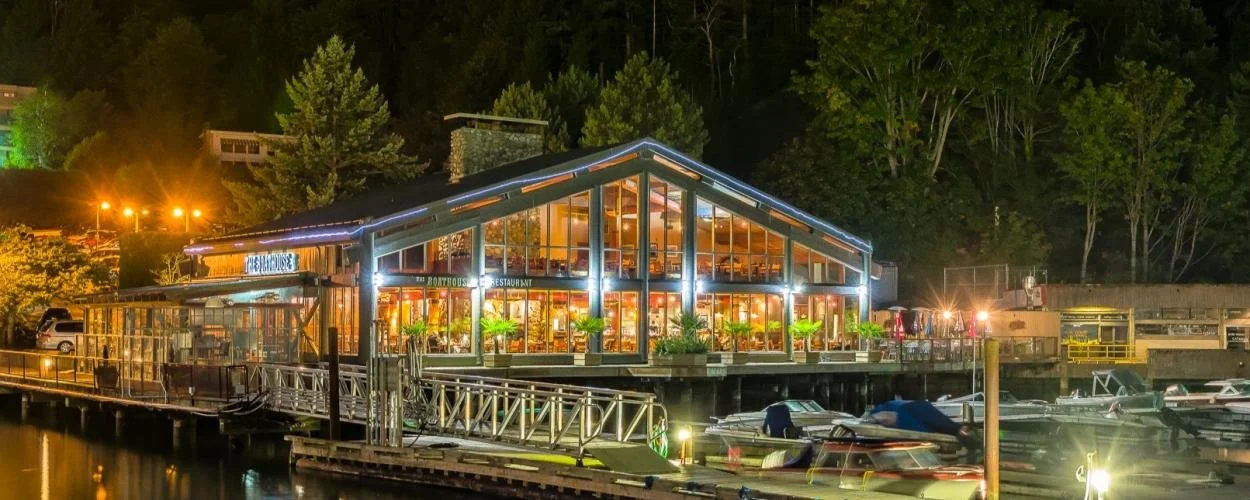Artist Geoffrey James's Canadian Photographs captures fast-changing spaces, coast to coast
Launching new book at the Polygon Gallery, Canadian photographer has an eye for unchecked development and elusive nature
Geoffrey James’s From the train, Fraser Valley B.C., 2019, from Canadian Photographs
Geoffrey James speaks at the book launch for Canadian Photographs at the Polygon Gallery on October 29, from 6:30 to 8 pm
CANADIAN PHOTOGRAPHS: THE TITLE brings to mind postcard images of snow-swept Rockies, a canoe floating on a reflective lake, perhaps a majestic moose standing knee deep in a raging river. But artist Geoffrey James’s new book of photographs instead resists oversimplified clichés, capturing Canada at this time of transition, in all its contradictions.
The veteran Montreal-based photographer has an eye for our country’s in-between places. Here in Vancouver, there’s the scrub brush of an empty lot on East Hastings Street, surrounded by chickenwire fence, industrial buildings, and criss-crossing hydro wires overhead, the mountains beckoning from the far-off distance. Or a faded alley behind downtown Granville Street, the almost-empty parking lot behind an aging “Grade A” restaurant, gleaming glass towers just above in the distance.
Published by Figure 1 Publishing, Canadian Photographs captures the paradoxes of urban and rural, development and derelict that continue across the country: a billboard of fluffy summer skies sits above a slushy parking lot below; a jaunty tourist steamship stationed frozen at port in Kingston, icicles dripping from the eaves of nearby blue boathouses. Abandoned blueberry stands, snowed-in fair signs, and the chaotic competing signs of corner stores: they’re here too.
And, wait, there is a moose, but it’s painted onto a kitschy landscape mural in Sudbury, with a mundane gravel parking lot in the foreground, the sign “Paradise” hanging over the scene.
The title is a sly allusion to artist Walker Evans’s groundbreaking 1938 book American Photographs. The Welsh-born James liked the ambiguity, stressing his compilation is neither a geography lesson nor a serious attempt to define Canadian “identity”. The images are a departure for the Governor-General’s Prize in Media and Visual Arts-winner who’s primarily known for panoramic landscapes. His series from the late 1970s to 1990s included manicured Italian gardens and the bridges, stairways, and parks of Paris—often shot with a camera from the 1920s, in black and white, and devoid of human figures.
“Canadian Photographs started partly because my practice changed,” he says, explaining he had moved to a sophisticated colour Leica digital camera. “And it’s very discreet. So I have this new technology, and it's very liberating, right? So I'm photographing everywhere. I'm photographing my life as I move through it. I never used to do that….I would go to work, I would fly to work and and stay until it was done. But this is something where I was doing it over the years. It’s a kind of a diary, in a way.”
Shot over the past 15 years or so, many of the images in Canadian Photographs come courtesy of his VIA train travel, criss-crossing the country—sometimes shot from out the window, a technique he perfected over time. The striking first image of the book looks out over Fraser Valley mountains and waterways from the inside of a vintage coach, complete with institutional-blue vinyl seats and a chrome door, a jaunty pink orchid and a bowl of fruit providing disorienting décor.
“It was a very good thing for me,” the artist reflects of his train travel. “I mean, I've been everywhere in Canada over the years, but they were very, very interesting trips. And I think it helped the book.”
Another big departure are the people who populate so many of the photographs. Ontarians in sandals and shorts crowding into the takeout Home of the Burger in Kaladar. An exhausted mother napping with her toddler on Sudbury’s Copper Cliff bus. Two other shots capture high schoolers celebrating their graduation from Vancouver’s Notre Dame, glammed up, playing adults, and taking selfies. James, who formed a friendship with Vancouver street photographer Fred Herzog in his later years, says he enjoys shooting people more these days, and it’s easier as he gets older. “Now that I'm quite old, people don't pay attention to me,” he insists. “You know, you put on your jacket, you have a little camera—I don’t even have a bag. So no one thinks I'm a photographer. I’m the Invisible Man, you know?”
Then he adds with a laugh: “I used to photograph every year in the Dundas Square in Toronto. They had a Saudi Day. And I remember one of these Saudi guys in a long white robe comes up and says, ‘May I take your picture? I think you are a typical Canadian.’” The new book includes an image from Saudi Day, one of many that captures the growing diversity of the country.
James himself immigrated to Canada in 1966. He became an associate editor of Time Canada in Montreal, as a writer, in the Expo-ecstatic year of 1967, working there till 1975.
“It was a time of absolute sort of effervescence—everything was very, very exciting,” he recalls. “And the country had 20 million people in it—and now it has 40 million.” From 1975 to 1982, he headed the Visual Arts, Film and Video section of the Canada Council—and it was early into that tenure, in 1977, that he was gifted the 1920s panoramic camera that would lead to full self-taught immersion in photography by a decade later.
“It took me years to figure out, and it took me a long time to realize that I could be a photographer, which is very different from doing it,” he says. “It was a very big decision.”
The immense changes he’s witnessed in Canadian society and cities inform much of his new book. Downsview shows a dystopian new development, a newly dug up and abandoned construction site for one of Toronto’s newest sites of urban sprawl; James points out the rich, dark pile of some of Canada’s most arable soil in the background. The idea of pristine nature in Canadian Photographs is often out of reach—like that idyllic mountain far out the windows of the confined train car.
“Toronto was never really conceived as a city and it has a long history of a lack of planning,” he says. “You see these crazy automobile-based cheek-by-jowl houses. You get the worst of both worlds. People don't have proper space. And it spreads right? And think about Calgary, all that goes forever over the foothills. I just realized as I was doing the book: this is not going well. But I’m not making it as a social message. I'm not an urban planner. No, I just wanted to maybe start some conversations or start people thinking about it.”
Geoffrey James’s Behind Granville Street, Vancouver, British Columbia., 2015, from Canadian Photographs
What’s ultimately important to understand is that these images—whether they’re captured through a train window or occurring on a downtown Toronto street—are not the result of accident. James has a uniquely honed ability to see Canada in a certain way, and to recognize an opportunity and act on it. “This way of working is you're working with chance. It's not that much luck as chance: ‘Oh, I'm going to do this today. It's a nice day. The light is good. What will happen today?’“ ![]()















